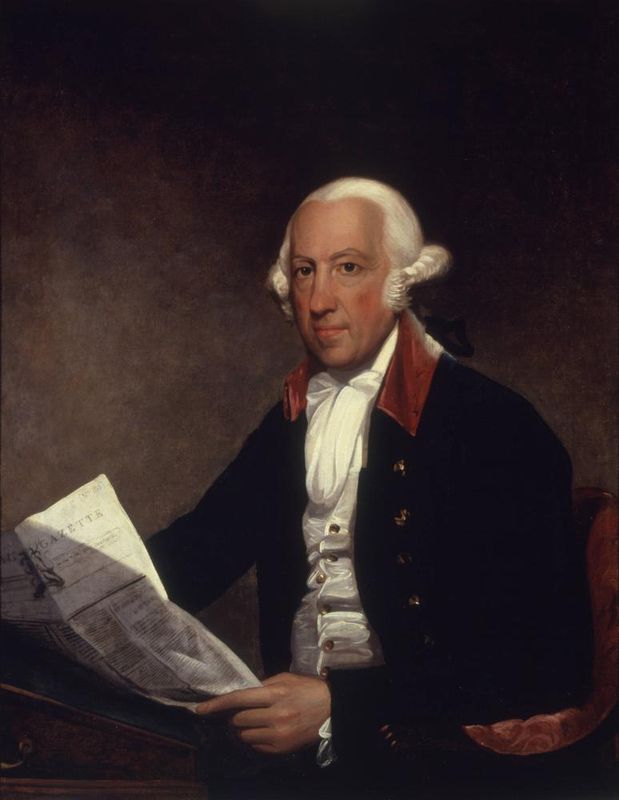James Rivington (1724–1802; fl. 1740–1783)
James Rivington, printer and bookseller at the Bible, 62 St. Paul's Churchyard, 1740–1760; journalist. Son of Charles Rivington (1688–1742); partner of brother John I, 1740–1756; partner of James Fletcher 1756–60. James Rivington was bankrupted in 1760 and moved Philadelphia that year. He resumed his trade, setting up bookstores across from the Golden Key in Hanover-Square, New-York, and next door to Messrs. Taylor and Cox, in Front Street, Philadelphia. After 1765 he carried out most of his business in New York. He founded and began printing and publishing a newspaper, Rivington's New-York Gazetteer, in 1773. The paper was increasingly loyalist and he returned to London for a short time in 1776 after his press was destroyed by the Sons of Liberty. He returned to New York the following year and from 1777–1783 his newspaper was entitled Rivington's New York Loyal Gazette, then the Royal Gazette, and, after the war, Rivington's New-York Gazette. Rivington's business subsequently dwindled and he died in poverty on 4 July 1802.
Dictionary of National Biography (1885–1900)
James Rivington (1724–1803), the sixth son [of Charles Rivington (1688–1742)], soon left the firm and joined a Mr. Fletcher of St. Paul's Churchyard, with whom he brought out Smollett's ‘History of England,’ clearing thereby 10,000l. He took to horse-racing, and in 1760 settled as a bookseller in Philadelphia. The following year he opened a book store at the lower end of Wall Street, New York. In 1762 he commenced bookselling in Boston. He failed, and recommenced in New York, and in April 1773 began ‘Rivington's New York Gazetteer,’ supporting the British government, which brought him into trouble with the colonists. He returned to England, purchased a new press, was appointed, on going back to America, king's printer for New York, and started ‘Rivington's New York Loyal Gazette’ (1777), afterwards the ‘Royal Gazette.’ He was the publisher of Major André's ‘Cow Chase.’ About 1781 he is said to have turned spy, and to have furnished Washington with important information. He remained in New York after the evacuation by British troops, and changed the title of his paper to ‘Rivington's New York Gazette and Universal Advertiser;’ but his business declined, his paper came to an end in 1783, and he passed the remainder of his life in comparative poverty. He died at New York in January 1803. He married twice: first, a Miss Mynshull in England, and, secondly, Elisabeth van Horne of New York (d. July 1795), by whom he had children. A portrait, which has been engraved, is in the possession of Mr. W. H. Appleton of New York.
H. R. T.
